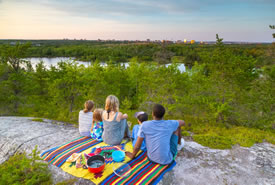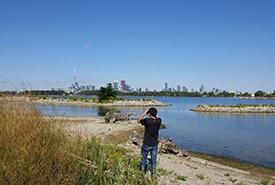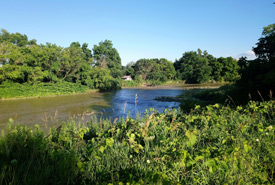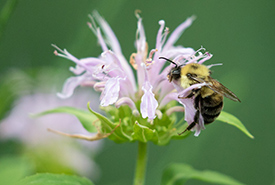Why nature in Canada’s cities could change conservation forever

Colpitt Lake in the Shaw Wilderness Park (Photo by Adam Cornick, Acorn Art & Photography)
When the Nature Conservancy of Canada (NCC) was founded almost 60 years ago, there was growing recognition that unmanaged urban expansion was threatening nature. In fact, our first project was to try to save a section of Rattray Marsh along the Lake Ontario coast in the city of Mississauga from being filled in. While this project was unfortunately unsuccessful, protecting nature from expanding towns and cities has driven NCC to conserve over 400 properties in and around urban areas, including Halifax, Montreal, Windsor, Ottawa — Gatineau, Regina and Vancouver.
These urban conservation projects matter for nature and for people. While Canada harbours a large portion of the planet’s last wilderness areas, it is also one of the most urbanized countries in the world. Just over 84 per cent of Canadians live in urban areas. And hidden in these new urban ecosystems are places that are important for nature and the well-being of those of us who call a city, home.
Traditionally, cities and nature did not mix. Urbanization is one of the key land use changes that threatens biodiversity globally and within Canada. Across Canada, we have replaced forests with freeways and prairies with parking lots. In addition to the direct loss of nature, urbanization often results in the replacement of species that remain in the city environment with common and often invasive species.

Leslie Street Spit is a popular birding spot in the heart of Toronto, ON (Photo by Wendy Ho/NCC staff)
At the same time as we have been losing nature in cities, there has also been a revolution in how nature is valued and conserved in cities. A recent survey of 27 Canadian cities reported over 15,000 hectares (37,065 acres) of natural parkland — an area larger than Bruce Peninsula National Park — with a trend of increasing demand for park naturalization projects. These include lands like floodplains that cannot be developed such as Edmonton’s river valley parks system and natural features that were included in city parks including Toronto’s High Park. Industrial sites and waste disposal sites have become biodiversity hotspots such as Vancouver’s Everett Crowley Park or Leslie Spit in Toronto. Today, you can find globally imperiled ecosystems in cities like Windsor, Toronto and Victoria and some natural areas in cities have even been identified as Key Biodiversity Areas because of their importance for bird life.
In addition to biodiversity, there is increasing evidence that urban nature and green spaces in cities provide significant ecosystem services to their residents, such as holding back flood waters and removing air pollution. The pandemic put many urban parks and protected areas at the forefront of the public’s mind, and many urban natural areas experienced unprecedented visitation. A survey by NCC found that 86 per cent of Canadians agreed that spending time in nature is important to their mental health during the pandemic.

Part of the Humber River (Photo by Adam Hunter/former NCC staff)
While we have often thought of cities as the problem to conservation, they may actually be the solution. Our cities are one of the few ecosystems where the state of nature is often improving. From regulations that improve water quality in many rivers, to unearthing and restoring creeks that have been buried for decades, to removing invasive species and building new wetlands, some of Canada’s largest and most innovative ecosystem restoration projects are happening here in our cities.
An important call to action is being heard in our cities: we need nature. And perhaps it is here in our cities where a renewed ethic of conservation, and of hope for the world that can be will take seed and spread across Canada.

Bumble bee on bergamot (Photo by Mhairi Mcfarlane/NCC staff)
We can all play a role — from neighbourhoods, to corporations, community groups, foundations and governments. As individuals, many of us manage little parts of the city ecosystem. It might just be one tree, or a small garden. But conservation is about collective impacts and our small acts of nature conservation matter, be it planting native wildflowers, participating in a community tree planting event or being on the look out for invasive plants.
Your perceptions of your city — your relationship with nature in your city — are just as important as your actions. To see your city not just as the concrete jungle, but as a living ecosystem. There is a diversity of life just outside your door. To see yourself not just a resident or a taxpayer, but as an ecosystem manager, because every park and backyard can provide a place for nature. And to see our society not as a destroyer of nature, but as a protector and restorer and blazing a pathway toward the ecological civility our planet needs.
In a world that is rapidly losing biodiversity, we need people to value nature, and to be connected to nature. We need Canadians who are supporters, advocates, funders and leaders of protecting nature across our country. But more than anytime in our history, nature needs people who are connected to it. And that connection can start at home.


